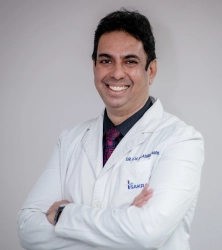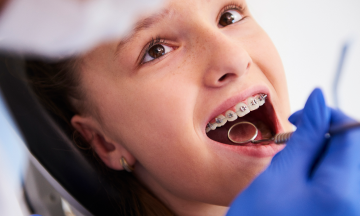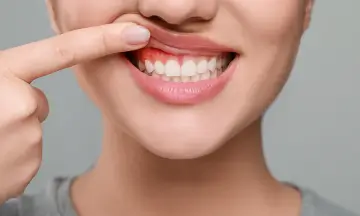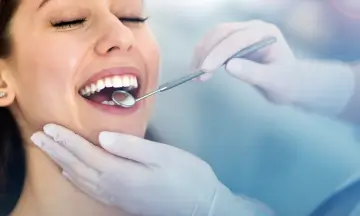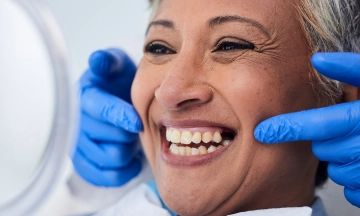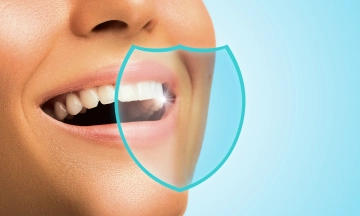
Dental trauma is physical injury to the gums, teeth, the alveolar bone (the bone that holds the tooth sockets), or the soft tissue of the mouth like the lips and tongue.
Accidents or sports injuries are the most common causes of traumatic dental injuries. Most of these injuries are minor, like chipped teeth. Dislodging a tooth or having it completely knocked out is less common, but the consequences are more serious. The nature, location, and severity of each injury determine the best treatment available for Dental trauma. It is very important to have your tooth examined by a dentist or an endodontist, regardless of the severity of the injury. A comprehensive dental checkup is required to discover any extra, undetected harm caused to your nearby teeth due to the injury.
Dental traumas are classified based on the severity of the injury, which is determined by the type of tissue that has been affected and the extent of damage that has been done.
Types of Dental Traumas
-
Concussion: A tooth concussion is the mildest type of injury that may occur to the teeth. In tooth concussion, the periodontal ligament fibers may be strained, and a few may be severed. However, there is still enough support to keep the tooth intact in the socket, resulting in no measurable increase in mobility. The tooth may be sensitive to touch or sensitive while being diagnosed. The gums around the tooth may become inflamed and bleed as well. In most such cases, the dental pulp's neurovascular tissues are unaffected.
-
Subluxation: A subluxation is an aggravated concussion. There is increased damage to the periodontal ligament, with more fibers damaged, and some gingival capillaries are strained as well. Although the tooth stays in its socket, trauma can trigger mild to severe tooth movement. At times, bleeding is evident in the surrounding gingiva. In this type of trauma, the pulp's neurovascular bundle may slightly be damaged.
-
Extrusion or Extrusive Luxation: An Extrusion is when a tooth is dislodged as a result of significant trauma. A luxation always includes a partial (and occasionally complete) rupture of the periodontal ligament, as well as substantial damage to or complete severance of the dental pulp's blood vessels and nerve fibers. The possibility of full dental pulp healing drops by around 50% when the tooth is displaced by simply 5 mm or more. The tooth is displaced outwardly away from the tooth socket in an extrusive luxation in a direction that is typically parallel to the tooth root orientation. Because part of the tooth root has been exposed, the tooth appears to have lengthened. In most cases, the alveolar bone in the tooth socket is not harmed.
-
Intrusive Luxation: The tooth is pushed further into the alveolar socket in this form of luxation. The alveolar bone is crushed, compressed and fractured. The periodontal ligament, as well as the pulp blood and nerve connections, are torn and crushed too. The tooth may get entirely buried in the jawbone and even penetrate the nasal cavity at times. This type of luxation causes Pulpal necrosis in most cases
-
Avulsion: The tooth is completely displaced out of the socket in this form of dental trauma. A part of the tooth root may remain inside the socket if it has been fractured. The root periodontal ligament and the pulp neurovascular supply are both entirely destroyed. This form of trauma is quite likely to result in tooth loss.
-
Broken Teeth or Tooth Fracture: Broken teeth are dental traumas that solely cause tooth injury and rarely result in dislocations. Teeth can be broken, fractured, chipped, or pulled out.
-
Alveolar Fracture: A bone fracture of the alveolar ridge is known as an alveolar fracture. This sort of fracture may or may not harm the tooth socket. This is a severe bone fracture that can involve several teeth and, if left untreated, can spread across the jaw or maxilla.
Dental Trauma - How is it Treated?
Treatment depends on the type and the severity. Here are the treatment options based on a few types.
1. For Broken, Chipped or Fractured Teeth
If your tooth's crown has been chipped or fractured, it may usually be fixed by reattaching the damaged portion or placing a tooth-coloured filling. If a considerable portion of your dental crown is chipped off, it may be necessary to repair it with an artificial crown or "cap."
Root canal therapy may be required if the pulp is exposed or injured as a result of a crown fracture.
2. For Dislodged luxated teeth
Your tooth will be repositioned and stabilized by an endodontist. Permanent teeth that have become dislodged typically require root canal treatment. As part of the root canal treatment, medication may be placed within your tooth; if the treatment is complete and considered effective, a permanent root canal filling or crown will be placed as a future stage.
Similarly, every treatment will depend on the case. It’s extremely important to reach out to your dentist if you experience dental trauma or injury - any delay would only aggravate the case and worsen the condition.
Sakra’s Dental Professional team ensures you receive the best dental treatment in Bangalore for all your dental problems.




